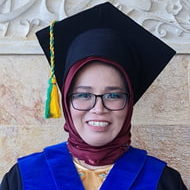Preparation and Application of Novel Functional Membrane Materials
A special issue of Membranes (ISSN 2077-0375). This special issue belongs to the section "Membrane Applications".
Deadline for manuscript submissions: closed (30 June 2023) | Viewed by 3049
Special Issue Editors
Interests: membrane technology; water desalination; wetland water and water treatment
Interests: carbon-based materials; membranes; ceramic
Interests: thermochemical conversion of solid waste; thermochemical conversion process simulation calculations; Computational Fluid Dynamics (CFD) simulations; carbon dioxide capture technology; inorganic membrane separation technology
Special Issues, Collections and Topics in MDPI journals
Special Issue Information
Dear Colleagues,
Water is essential for life, and the demand for it will rapidly continue to increase with the rise in the global population and urbanization. The main problems currently are a shortage of water, poor health, and hygiene, as well as an increase in the cost of producing clean water. Membrane technology has proven effective in treating seawater, wetland, and wastewater. Many materials have also been reported for fabricating various membranes applied in wastewater treatment, water filtration, and other water separation and purification processes.
We invite you to submit your reviews and research articles to the Special Issue entitled “Preparation and Application of Novel Functional Membrane Materials”, which will present your latest results in the field of membrane materials and applications in water separation, water desalination, as well as water filtration and purification. Topics include (but are not limited to) the following: membrane preparation; membrane materials; membranes for water desalination; membranes for wetland water treatment; and membranes for wastewater treatment, water filtration, and other water separation and purification processes.
We look forward to receiving your contributions.
Prof. Dr. Muthia Elma
Dr. Christelle Yacou
Dr. Guozhao Ji
Guest Editors
Manuscript Submission Information
Manuscripts should be submitted online at www.mdpi.com by registering and logging in to this website. Once you are registered, click here to go to the submission form. Manuscripts can be submitted until the deadline. All submissions that pass pre-check are peer-reviewed. Accepted papers will be published continuously in the journal (as soon as accepted) and will be listed together on the special issue website. Research articles, review articles as well as short communications are invited. For planned papers, a title and short abstract (about 250 words) can be sent to the Editorial Office for assessment.
Submitted manuscripts should not have been published previously, nor be under consideration for publication elsewhere (except conference proceedings papers). All manuscripts are thoroughly refereed through a single-blind peer-review process. A guide for authors and other relevant information for submission of manuscripts is available on the Instructions for Authors page. Membranes is an international peer-reviewed open access monthly journal published by MDPI.
Please visit the Instructions for Authors page before submitting a manuscript. The Article Processing Charge (APC) for publication in this open access journal is 2200 CHF (Swiss Francs). Submitted papers should be well formatted and use good English. Authors may use MDPI's English editing service prior to publication or during author revisions.
Keywords
- membrane applications
- water separation
- water desalination
- water filtration and purification
- membrane-based materials
Benefits of Publishing in a Special Issue
- Ease of navigation: Grouping papers by topic helps scholars navigate broad scope journals more efficiently.
- Greater discoverability: Special Issues support the reach and impact of scientific research. Articles in Special Issues are more discoverable and cited more frequently.
- Expansion of research network: Special Issues facilitate connections among authors, fostering scientific collaborations.
- External promotion: Articles in Special Issues are often promoted through the journal's social media, increasing their visibility.
- Reprint: MDPI Books provides the opportunity to republish successful Special Issues in book format, both online and in print.
Further information on MDPI's Special Issue policies can be found here.








